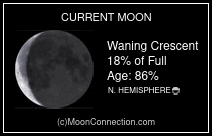Around the time the mums begin to
wither and oaks are the only trees left with leaves, diehard ice anglers
experience a concoction of feelings—equal parts eagerness and excitement peppered
with a dash of agita. These feelings wash over like a wave with the first true cold
snap of fall. Akin to a bat signal, it sends hardwater fanatics across the
north to basements and garages to tie leaders, tinker with tip-ups, and dust-off
augers. We set up crude tanks and trek to streams or ponds to catch bait. We interpret
long-range weather forecasts and Farmers’ Almanacs. We look to nature for signs
of a pending hard winter: an unusual abundance of acorns; early departure of waterfowl;
the width of the brown bands on woolly bear caterpillars. We wait for ice.
Ice fishing is unique and highly
anticipated for a bevy of reasons. Perhaps the most important is that the
allotted time anglers are able to partake in it each year is very unpredictable.
We have zero idea when the season will begin or end any given winter. In
comparison, I know exactly when blackfish season starts; I can set my watch by
when migratory striped bass show up; I can go to my local tailwater and catch
trout all year long. For ice fisherman, Mother Nature is the ultimate decider
when our season starts and stops. We must be patient.
Here in southern New England, in our coldest winters, the fishable ice window is about three months long, four if we are lucky. Some years things don’t always pan out that way. I’ve experienced more than one season that started with an early freeze and came to a halt with a midwinter thaw. I’ve also witnessed ice seasons that never got going until the late innings with only a handful of bodies of water locking up. While walking on water is more of a certainty to our north, it’s still not a guarantee on large and popular lakes like Sebago and George. As the old adage goes, absence makes the heart grow fonder and ice fishing’s indefinite and limited timeframe each winter certainly helps me appreciate it more.
Though I get jazzed up for any kind
of fishing, the lead up to first ice—that brief period when lakes and ponds initially
freeze over with clear, hard ice—is tough to beat. When our quarry, unpressured
for weeks, sometimes months, are still active and sense the coming doldrums
ahead. This can translate into fast action—whether jigging up a pile of panfish
or chasing flags all day—and it’s not unheard of to pull your best fish of the
season during this early part of the season. It’s not some magical time where fish
are committing hara-kiri on the end of your line but I’ve doing this long
enough to know that you want to be on the ice as early as you can once it
starts.
There are no hard and fast rules
with first ice. For example, we know it begins when liquid finally becomes solid,
but it’s less precise when it ends. First ice doesn’t necessarily happen all at
once either. Your shallower lakes and ponds lock up first, naturally. That’s
why bass, pike, and pickerel are usually first on many anglers’ target list. As
the season progresses, deeper bodies of water follow suit and ice anglers start
spreading out to target different species like trout, walleye, and crappie.
There is nothing in the world
like walking on a sheet of black ice before any snow covers it. It’s a thing of
beauty—the consistency and hardness of it and its lack of imperfections; the
way shanty anchors bite into it and the crunching sounds boot studs make on it.
The optics of black ice are surreal. When walking over shallows, you can make
out every piece of structure from boulders to weed lines to stumps. If you’re
really lucky and hook into something under black ice, you get a first-row seat
to the tug-of-war right underneath your feet. It’s a wild experience.
As in any type of fishing, having
a small circle of friends that you trust and share information with pays
dividends, but it’s tough relying solely on second-hand ice reports. Checking the
ice’s thickness and quality yourself is the only way to know for sure. I live at
least an hour’s drive from my favorite ice spots, so scouting is both time
consuming and costly, yet those who scout are usually on the ice first, long
before anything trickles down to social media. There’s been times I’ve bailed from
work early to check spots that I had hoped to walk on the following day only to
find wide-open with white caps. I’ve also gambled without scouting and drove 90
minutes only to be been turned away from crap ice, all before the sunup. First
ice will always be a risk/reward scenario—wait until word gets out or be one of
the first groups out there.
I don’t have the flexibility at
home or at work as I once did, so I try to make the most of every opportunity
and relish the days or nights on the ice when they come. I’ve come to accept
that that feeling in the pit of my stomach won’t ever go away when I am stuck
at work knowing other anglers, friends or not, are drilling holes on fresh ice.
I know they feel the same way when the tables are turned. Just fish when you
can.
Here I am, more than 20 years after
being introduced to hardwater, and those feelings of excitement and anxiousness
as the season approaches haven’t faded a bit. My sled is packed and ready by
the basement door like a bird dog waiting for the next upland hunting trip. Until
then I’m keeping an eye on the weather and hoping for a string of calm, cold
nights. If we’re fortunate to get some good ice this winter, have fun out there
and stay on top.






























.jpg)



























